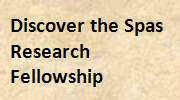 |
|||
|
|
|||
|
||||||||||||||||||||||||||||
|
P R O F I L E |
||||||||||||||||||||||||||||
|
 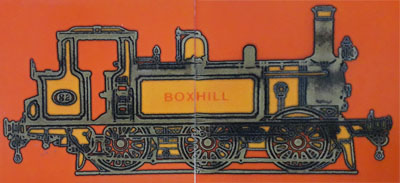 A Collection of Illustrations of the LBSCR
A Collection of Illustrations of the LBSCRright: an early Stroudley loco on wall tiles. The small coal tender reflects the relatively short distance from London to Brighton Great Britain RH16 1DJ The London to Brighton railway was one of the first inter-city railway lines in Great Britain. Part of it replaced the early 19th century Croydon, Merstham and Godstone iron railway. This was a horse draw plateway carrying goods, particularly stone from the Merstham mines, through Surrey.
The London to Brighton railway opened in 1841 after several years of planning and construction. The route included several tunnels and viaducts and as such was a major engineering feat of world importance. It had a significant impact on the former fishing village of Brighton by enabling the mass public to journey to the coast from London on day trips. Brighton metamorphosed into a popular coastal venue as a result. Formerly it had been the resort of the royalty and upper classes with the Brighton Palace and Spa facilities.
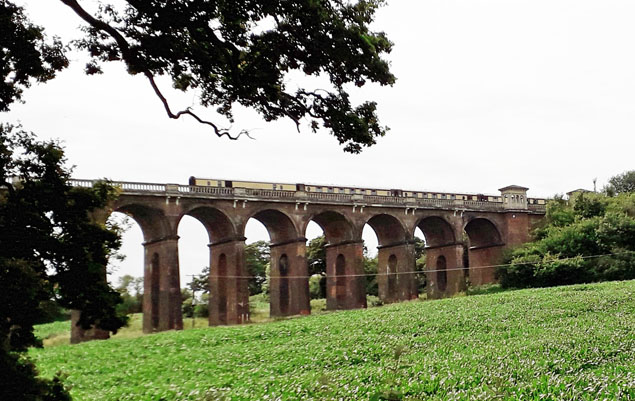
In August 2019 the vintage Brighton Belle crosses the impressive Great Ouse/Balcombe Viaduct's 37 arches, 11 million bricks. It was on a trial run for the restored train before being returned to service, planned for 2020. 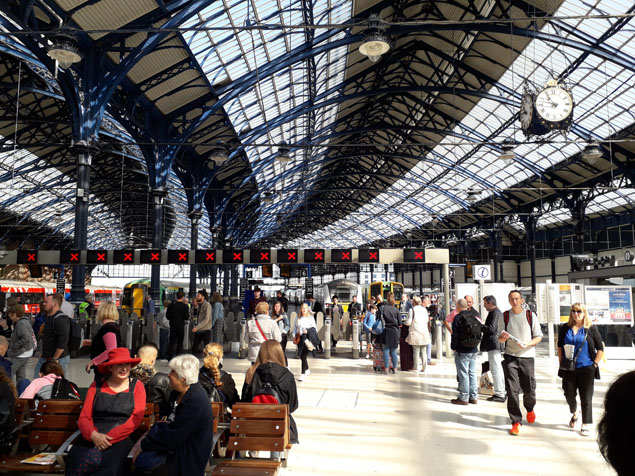
Brighton Station was ready for trains in 1840. This impressive Victorian structure still provides shelter for the multitudes flocking to and from Brighton. 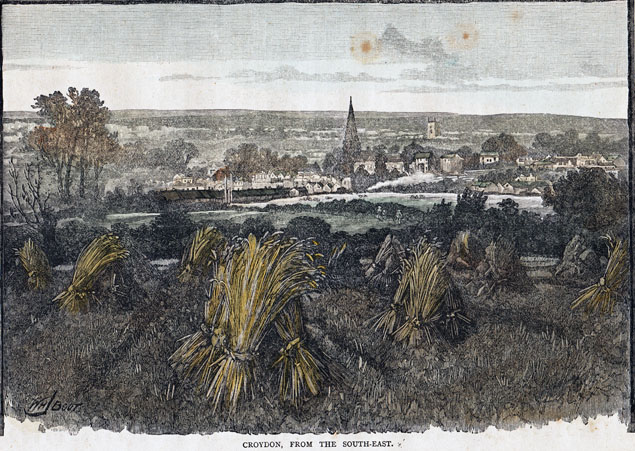
This mid 19th century view of Croydon has the early distinction of showing smoke from a steam engine train just pulling out of the (East) Croydon Station on its way to Brighton. This would have been an exciting new experience to see for any spectators. 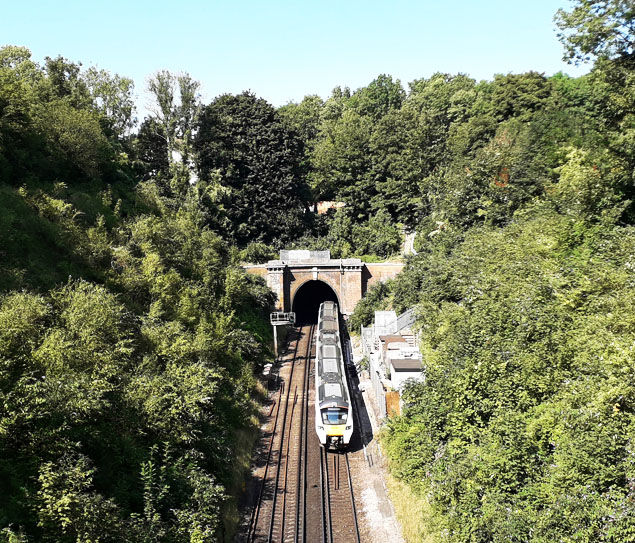
The southern end of the Merstham Tunnel where once there were stone mines, in 2019. The train is heading for Gatwick and Brighton; the former being a new key stopping point for this vintage railway route. 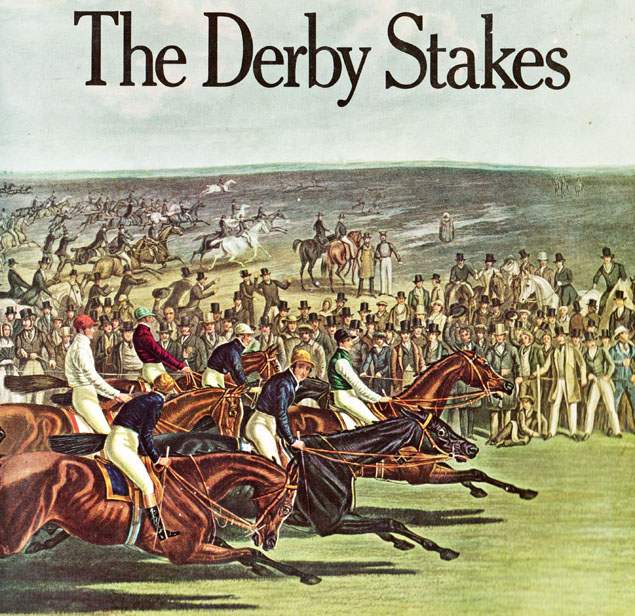
Racing at Epsom Downs proves a popular pastime for the public at large. However the course would have not have been so accessible had not branch lines to Epsom Downs and Tattenham Corner stations been created off the London to Brighton railway. 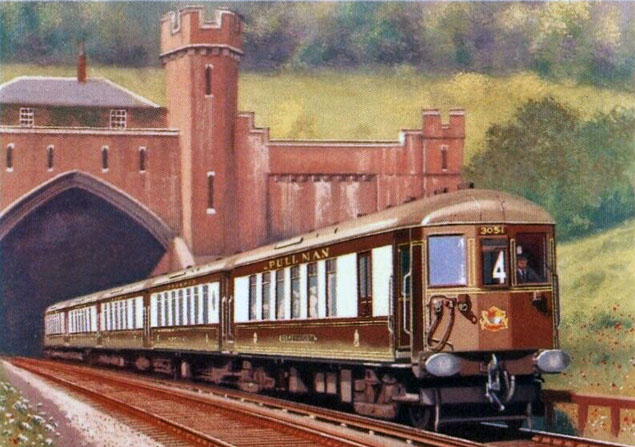
The Brighton/Southern Belle, a much celebrated train, took its last run on the 30th April 1972. Following restoration the original carriages are hoped to be running once again in 2020. In the picture it is emerging from the north portal of the Clayton Tunnel powered by electric. Earlier it had been steam powered. 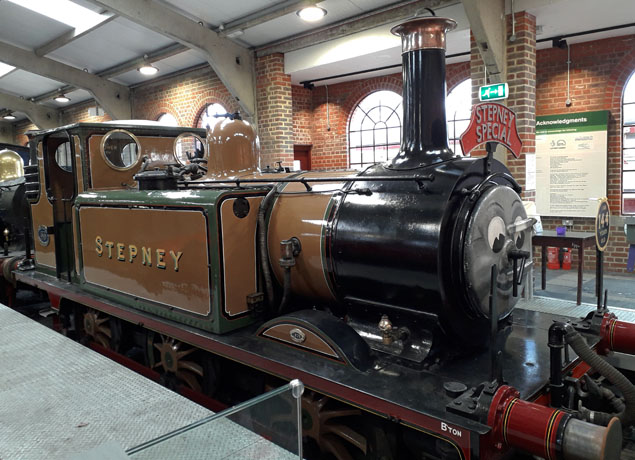
The Stepney is a Stroudley Terrier steam locomotive produced in 1875. Its length is 26ft 1/2 ins with a weight of 28 Tons 5 cwt. In the beginning of 1870 the LBSCR had very little in the way of standardisation among the loco stock. Also the assortment of locomotives were by no means a match for the work that they had to do. It was decided that a range of standard locos was required and in the following 15 years such a range was produced with some 8 or so loco classes. Today the Stepney can be found on the Bluebell line running from East Grinstead. 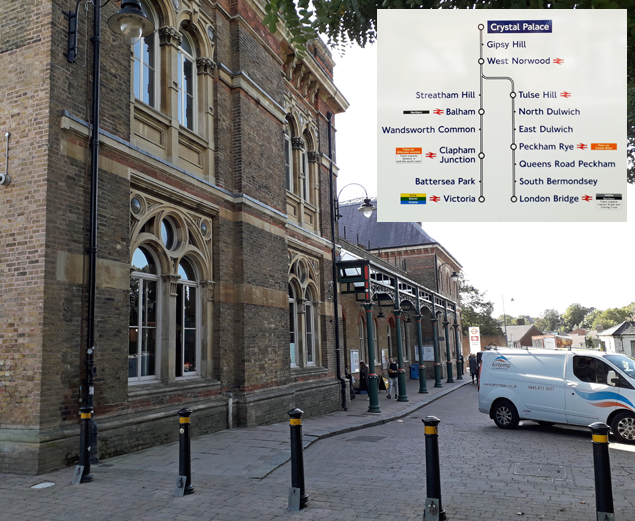
In the 19th century a number of railway companies sought to provide London terminuses. The LBSCR succeeded in establishing two, London Bridge and Victoria. Just north of Croydon however the Crystal Palace, newly transferred from Hyde Park, provided further passenger opportunities. From the outset trains were operated by the London, Brighton and South Coast Railway (LBSCR), however a network of lines and companies sought to establish rail links to the site. Today the Crystal Palace Station with its complexity of lines bears testimony to this Victorian ambition. ADDITIONAL INFORMATION The following books are recommended as sources:
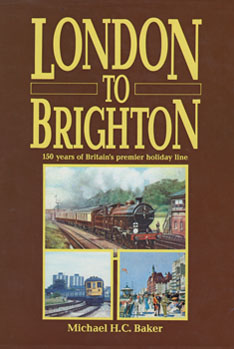 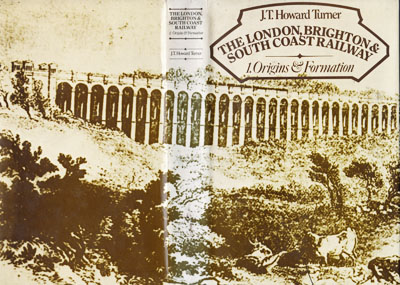
CLICK THE FISH BELOW TO EXTEND YOUR EXPLORATION OF BRIGHTON  Brighton's Past on Shifting Sands Part ONE.  Brighton's Past on Shifting Sands Part TWO.  Brighton's Past on Shifting Sands Part THREE.  Brighton's Crimean Cannon.  The London, Brighton and South Coast Railway.  The Last Fisherman - Rory's Grotto.  Tourism and the Sussex Downs - South Downs National Park.  Crystal Palace - a key tourist location between London and Brighton. REGION England - Southern |
||||||||||||||||||||||||||||



